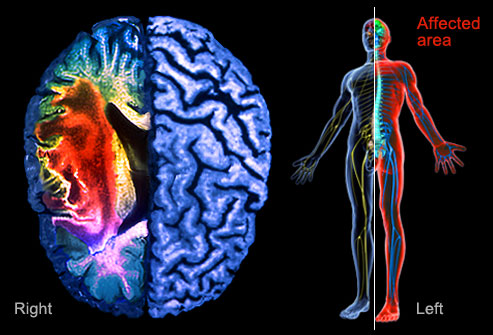Stroke, sometimes called cerebrovascular accident is a term used to describe interruption of blood supply to the brain. This interruption can be caused by either a blocked or ruptured blood vessel. It then causes the brain cells to lose oxygen supply and the part of the body where the brain controls becomes impaired.
Signs and symptoms of stroke:
Stroke manifests different symptoms depending on the size and the area of the brain affected. The most common symptoms are:
- Difficulty speaking or comprehending what is being said
- Sudden weakness or numbness on one side of the body, usually the arm, leg or face
- Sudden or severe headache with no known cause
- Difficulty seeing in both or one eye
- Difficulty moving, walking or with coordination
- Memory loss
There is a guideline which helps the general public in the recognition of stroke:
Act F.A.S.T.
F=Face. If one side of the face sags when the person smiles
A=Arms. If the person is unable to lift one arm
S=Speech. If the person’s speech becomes slurred
Time=Time. Timeline in the management of stroke is essential. The person showing symptoms of stroke should be taken to the hospital as soon as possible because the effects of physical disability may be reversed if proper intervention is given.
Physical impairment is one of the consequences of a stroke. Common impairments are
- Swelling
- Weakness,
- Changes in muscle tone,
- Hand dysfunction,
- Shoulder subluxation,
- Changes in sensation,
- Stiffness/Contracture
- Co-ordination problems.
Physiotherapy management of stroke
At PhysioCraft, we will help in preventing complications, restoring movement, improving balance and walking, prescribe appropriate orthoses and prostheses. Focus would be on strengthening weak muscles, reintegrating into the society and living as independently as possible. We would use interventions such as positioning, practice, constraint induced movement therapy and biofeedback.
Recovery after stroke
The rate of recovery is dependent on so many factors: age of the patient, type of stroke, type of emergency treatment given after the stroke and severity of the impairment. While many of the aforementioned may not be in the patient’s control, how quickly you start physiotherapy intervention, the consistency and frequency of treatment also plays a significant role in recovery and restoration to pre-stroke status.
If you have any questions ore require more information, you can fill our contact form or give us a call on +2348035670888 or +2348171940921. We would be happy to answer any question or give you guidance for free.


